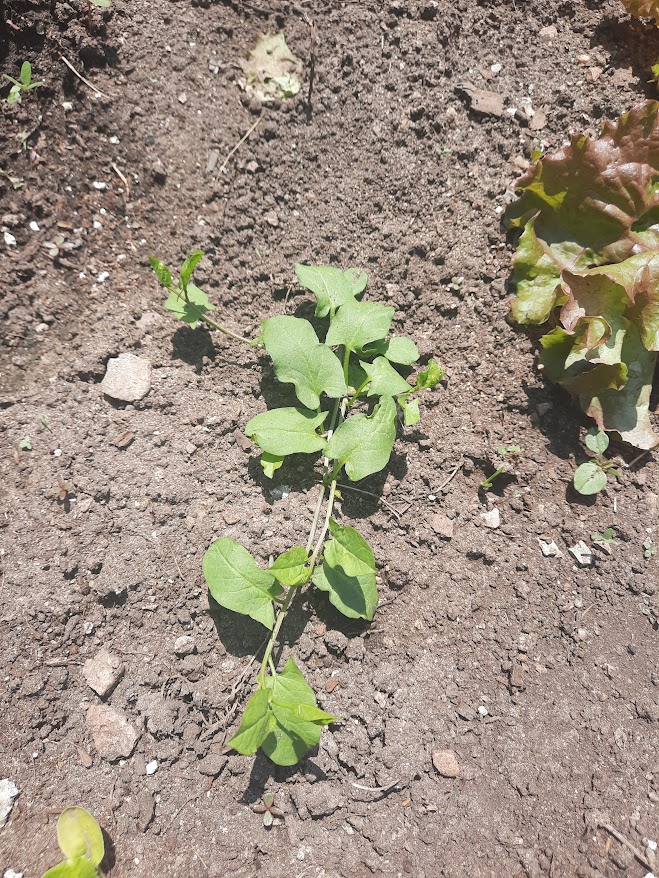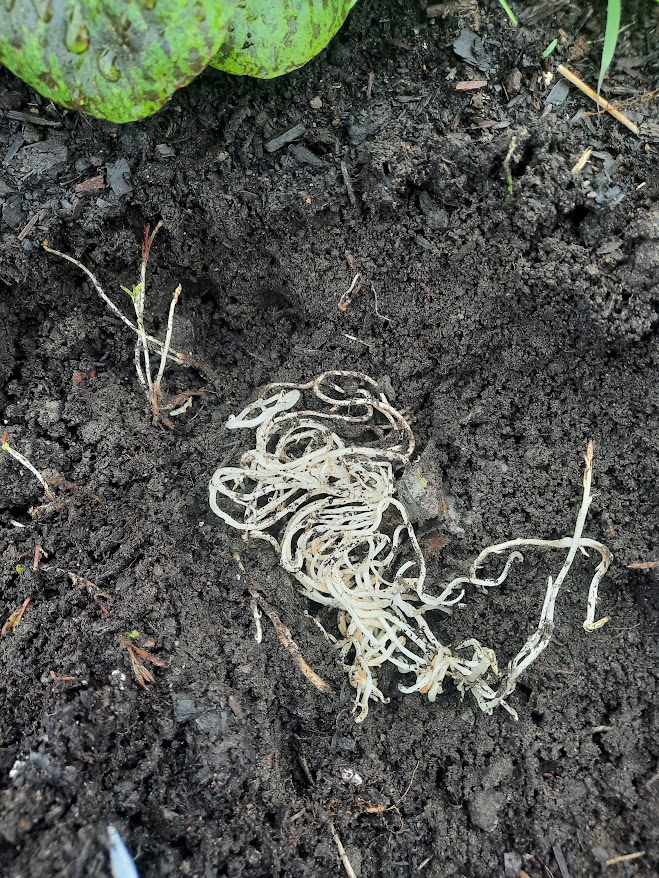Garden cleanup happens after first practicum. During the session, consecutive students (concurrent do not join until September) clean up garden beds and planters to prepare them for planting. Some beds will be so overrun by weeds that it’s not worth trying to salvage remaining plants from last year, but others will have established plants that you need to work around, such as milkweed that attracts butterflies and woad which takes 2 years to seed! Below, I highlight some of the plants and creatures that must be removed because they will choke and kill your vegetables!
Animal Pests
Spongy Moths
While digging, you might come across sponge moth cocoons. Pop them! If you, like me, are nauseated by the idea of popping with your fingers because they will spray you, put them on a hard surface and stomp them, or find a peer to do it.
Spongy moths are invasive; They originate from Europe, North Africa, and Asia and destroy local plants by eating their leaves. Their populations have been controlled and/or removed in most provinces, but they are still present in Ontario and Quebec.
Grub Worms
Do not be fooled by their name, grub worms are not wiggly friends with no legs! They are actually the larval stage of many beetles, and are recognizable by their orange head, creamy body, and legs at the front of their body. Not all grub worms are invasive, but they are all damaging to your garden! One type of grub worm is the larval stage of the native June beetle, but others are the larval stage of the invasive European Chafer and Japanese Beetle.
To kill grub worms, remove them from the garden and place them on a hard surface. Stomp them.
Plant Pests
Loosen the topsoil with a spading forks and start pulling out the plants. Be sure to keep as much soil as possible in the beds by shaking out the entangled roots. Then, once the soil is shaken out, place the plants on a tarp so they can dry out. Do not just leave on the ground! They will re-root and start growing again. One the visible plants are removed, use a hand cultivator to brush through the soils and expose the long, deep grass roots that will we grow if left untended!
Field Bindweed
Field Bindweed is an invasive plant originally from Eurasia that was introduced to Ontario as an ornamental plant. Field bindweed is aggressive in the gardens; it grows deep, long roots (we found roots over 2′ long) that can be dug back to nest-like growths, and the vines with crawl up and choke out your crops. If you find some, you will likely end up digging up most of the garden bed to remove the ropey roots.
Be mindful of field that grows outside of the garden bed: the roots grow under the soil and up through the bed, and the plants extend over the barriers and pull down crops. Without trellises, the vines radiate from a central root and stay low to the ground, so they are missed by mowers and weed whackers. To locate field bindweed in the grass and prevent it from reach under or through te beds, or from spreading seeds, locate it with the white, cup-like flowers and trace the vine back to the central root.
Be sure to remove field bindweed as you see it while watering or going by the gardens because it grows very quickly!



Grasses
Not all of the grasses on campus are invasive grasses, but they are all annoying in garden beds and tough to remove. Unlike Japanese Knotweed, grasses have thin, dense roots that makes it difficult to save the soil. When removing grass, use a spading fork to get below the surface roots and lift. Then, you can pull large chunks at a time and shake the soil out of their roots
Stinging Nettle
Stinging nettle can be found all across Canada and is not invasive! It is up to you to decide if the benefits outweigh the discomfort, and to consider how keeping the plant contained affects your decision. Stinging nettle has hairs along the stem and underside of the leaves, which, when brushed up against, cause immediate stinging sensation followed quickly by raised welts. Over a few hours the welts usually become red-ish before fading away. The stinging sensation, depending on the exposure, can last a few minutes to a couple of days.
With careful handling, stinging nettle leaves can be boiled for a tea rich in vitamin C, and the stems can be made into cord!
Resources/Further Reading
- Spongy Moths
- White Grubs
- Field Bindweed
- https://www.ontario.ca/page/field-bindweed#:~:text=Herbicides%20which%20provide%20good%20control,in%20late%20June%20or%20July.
Recent Comments